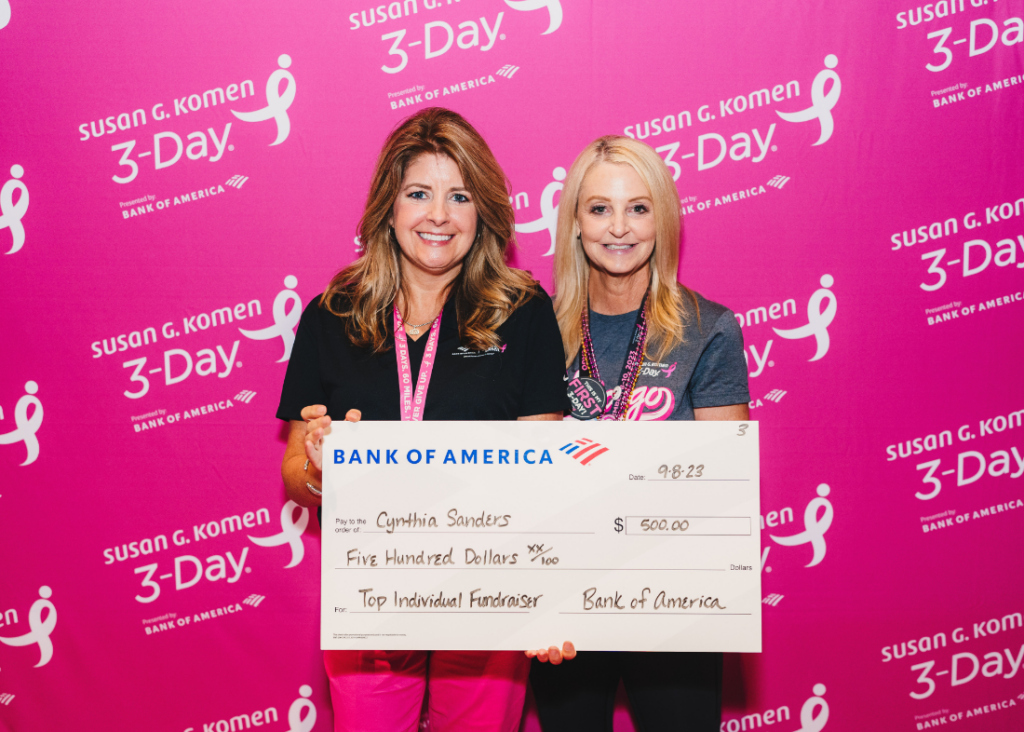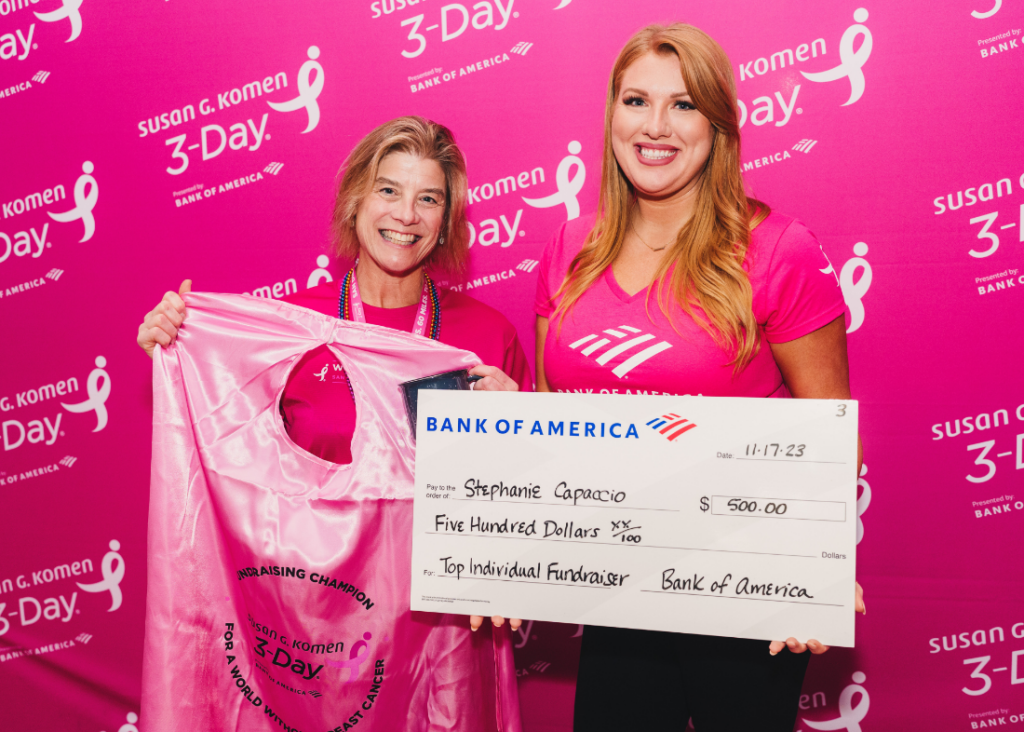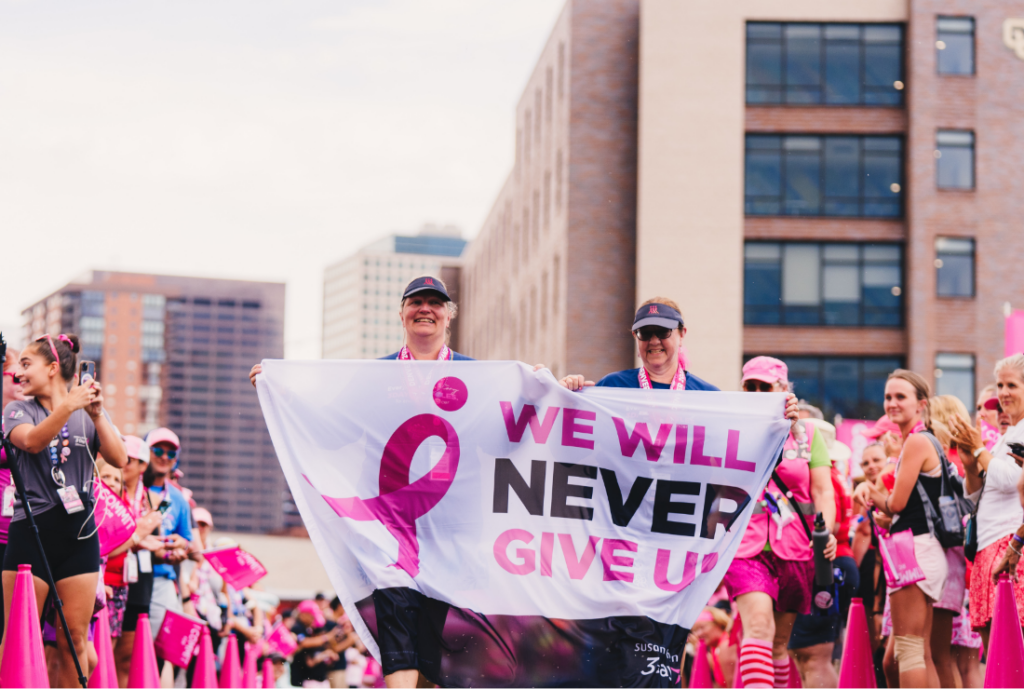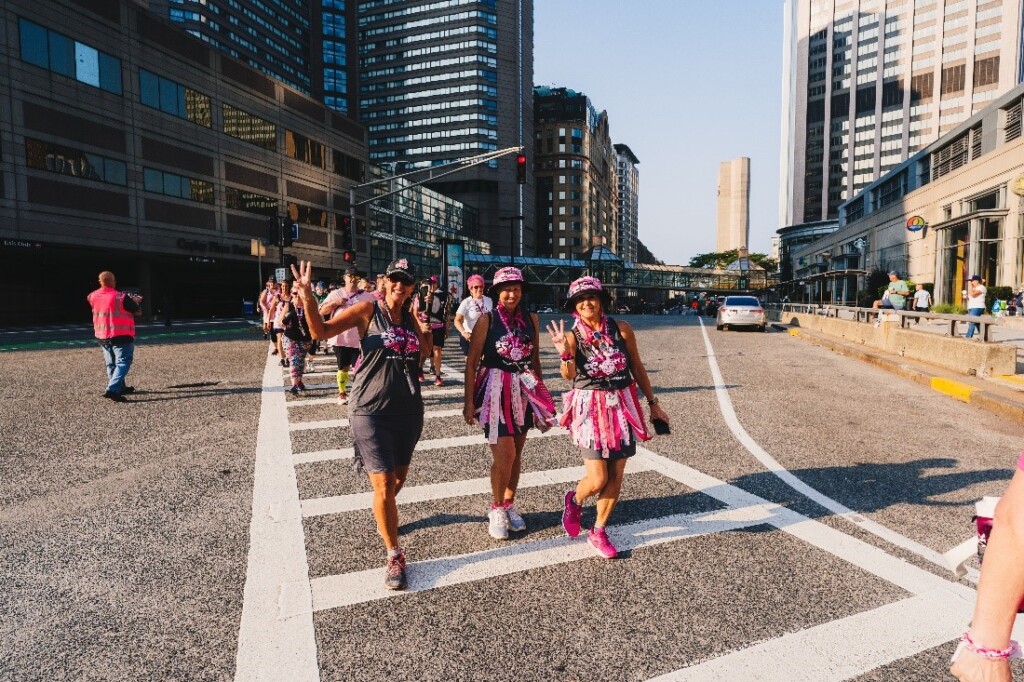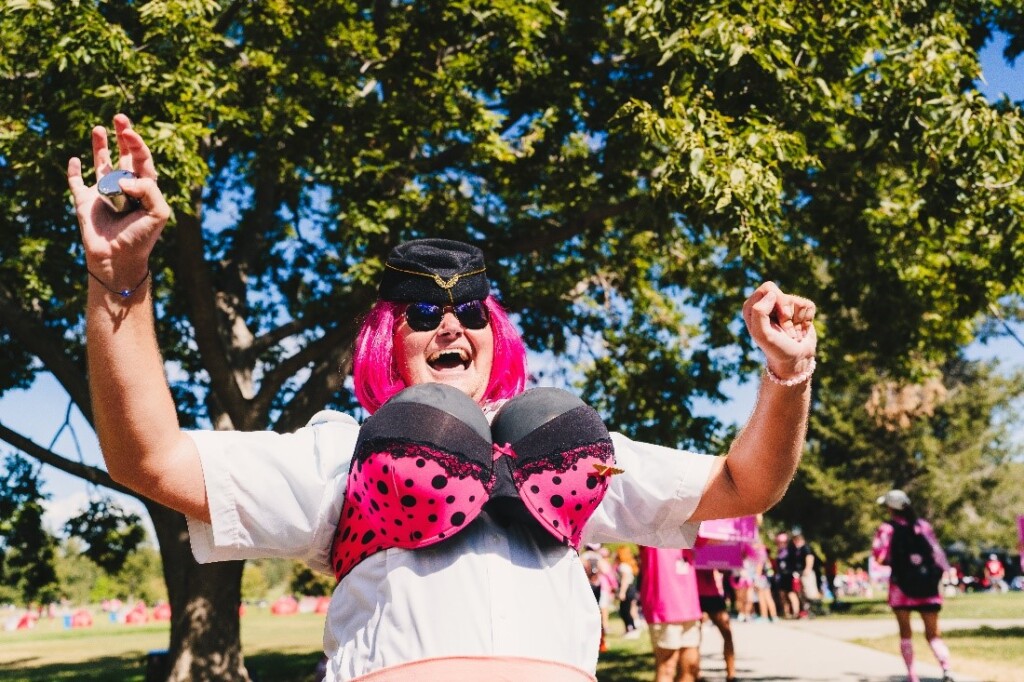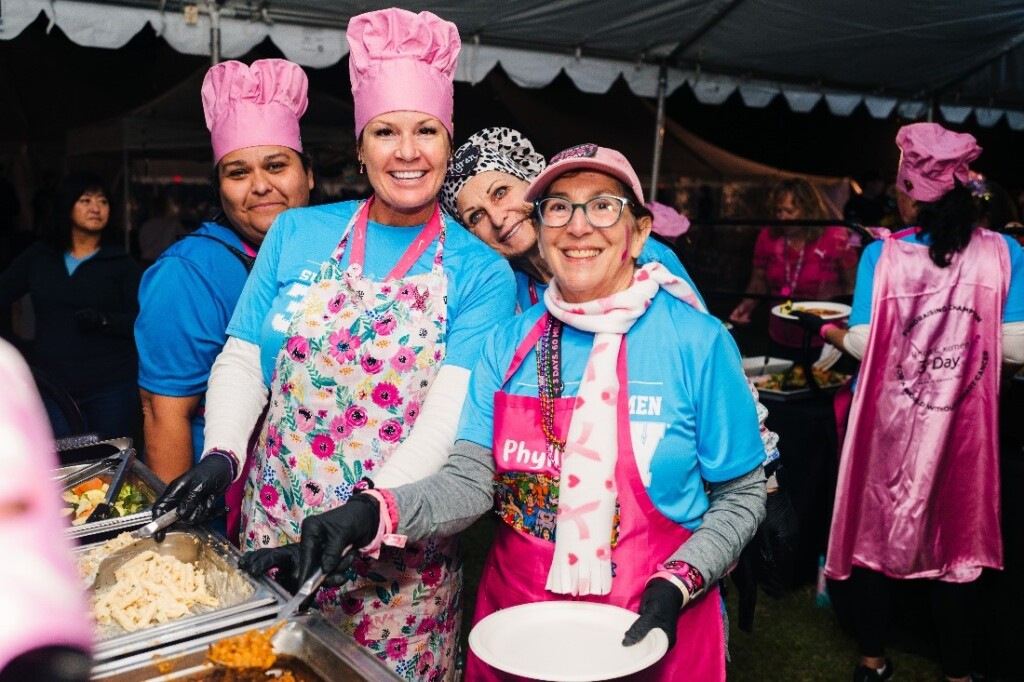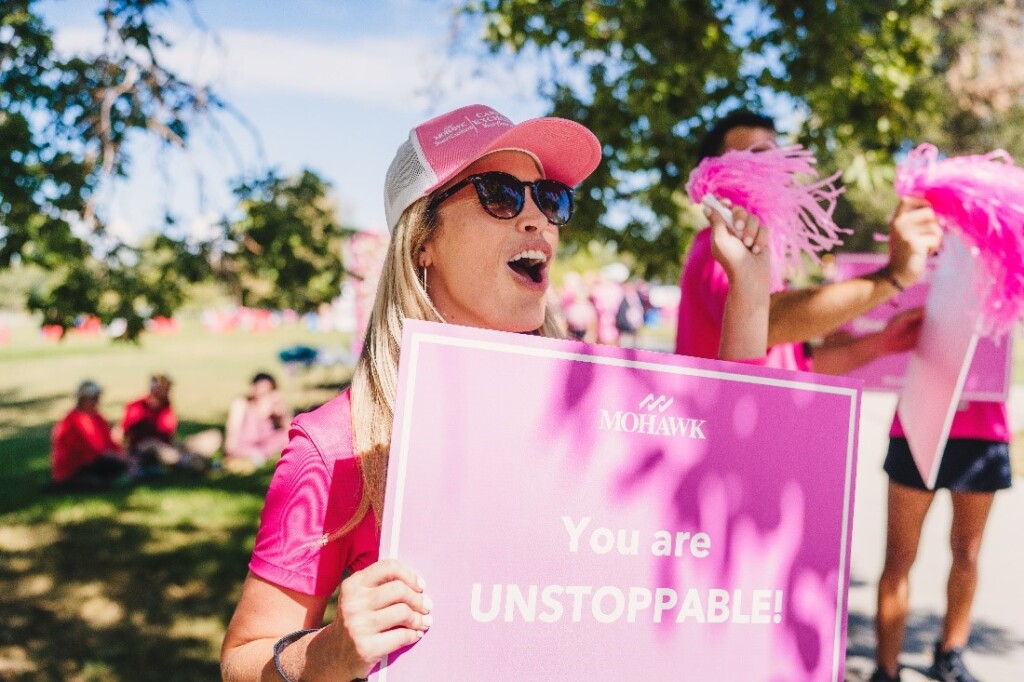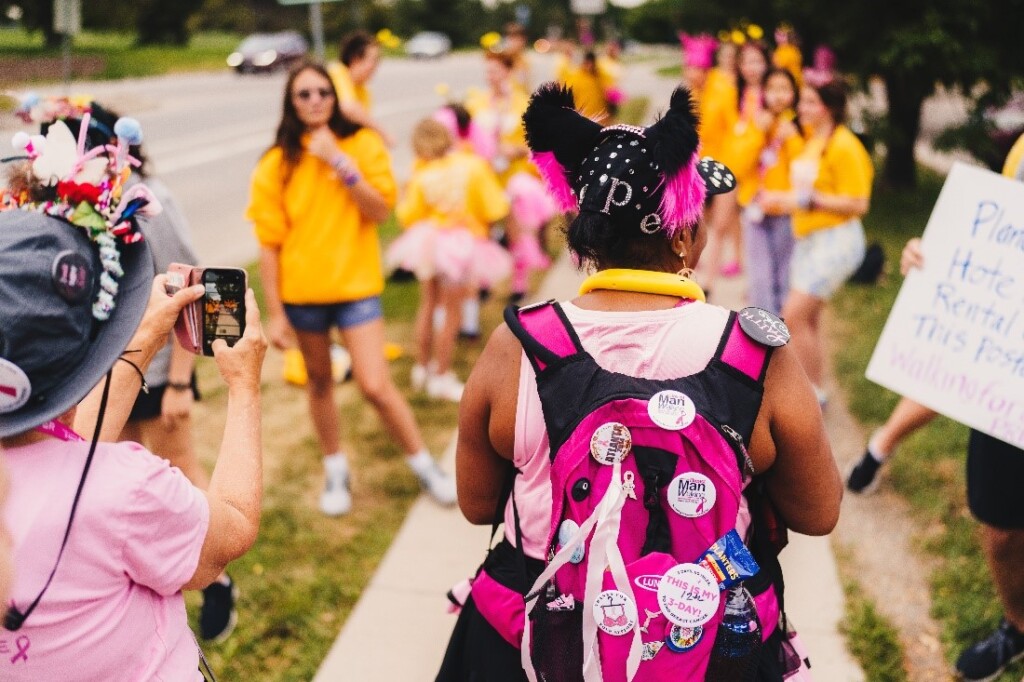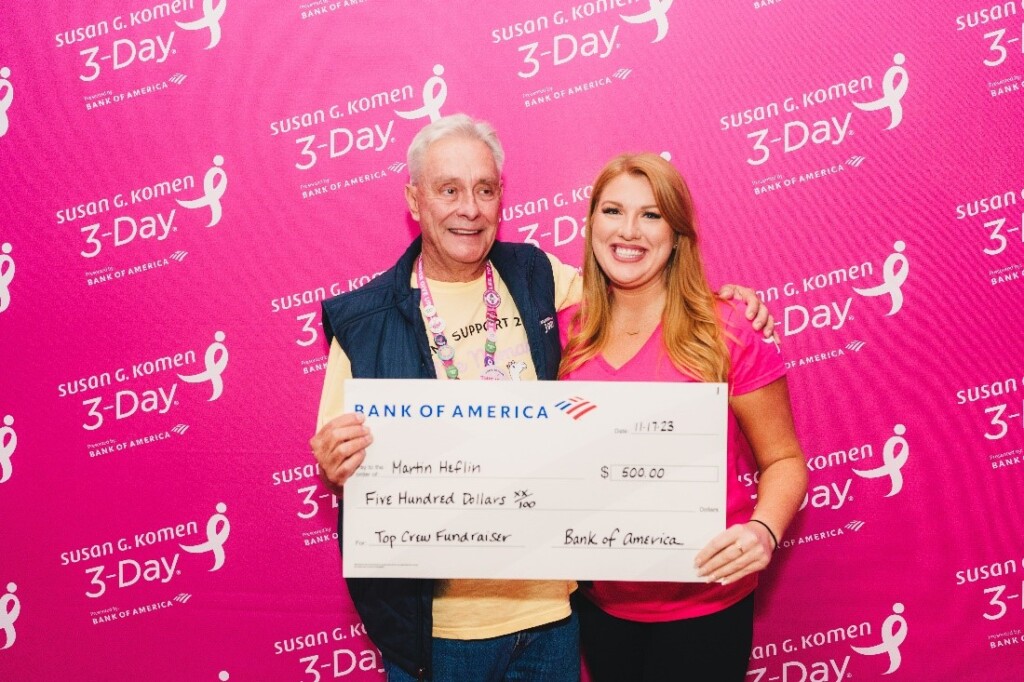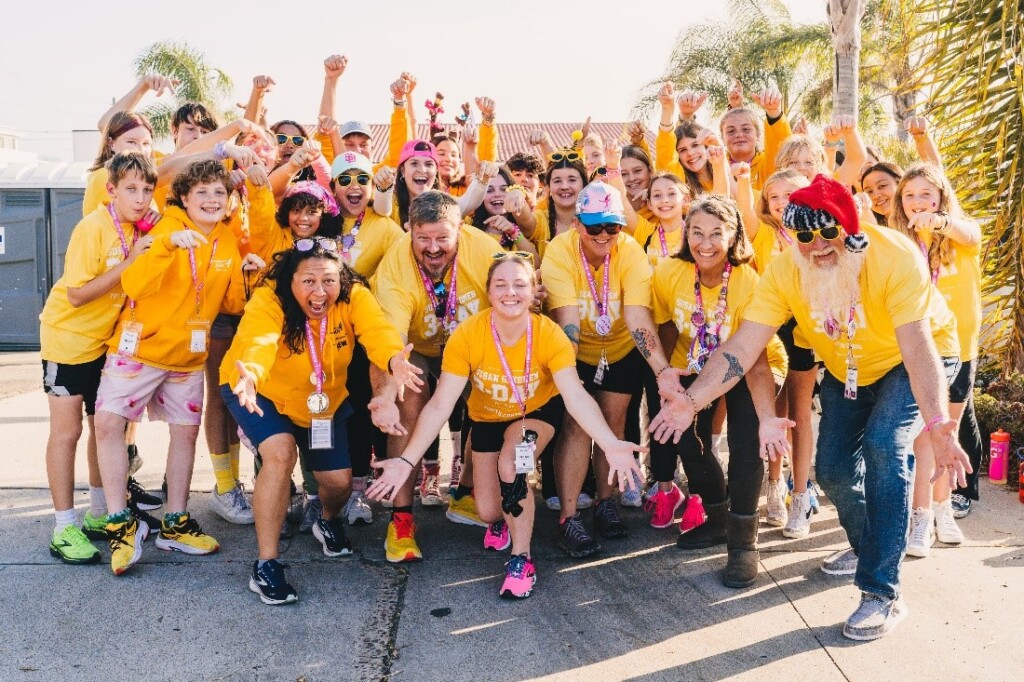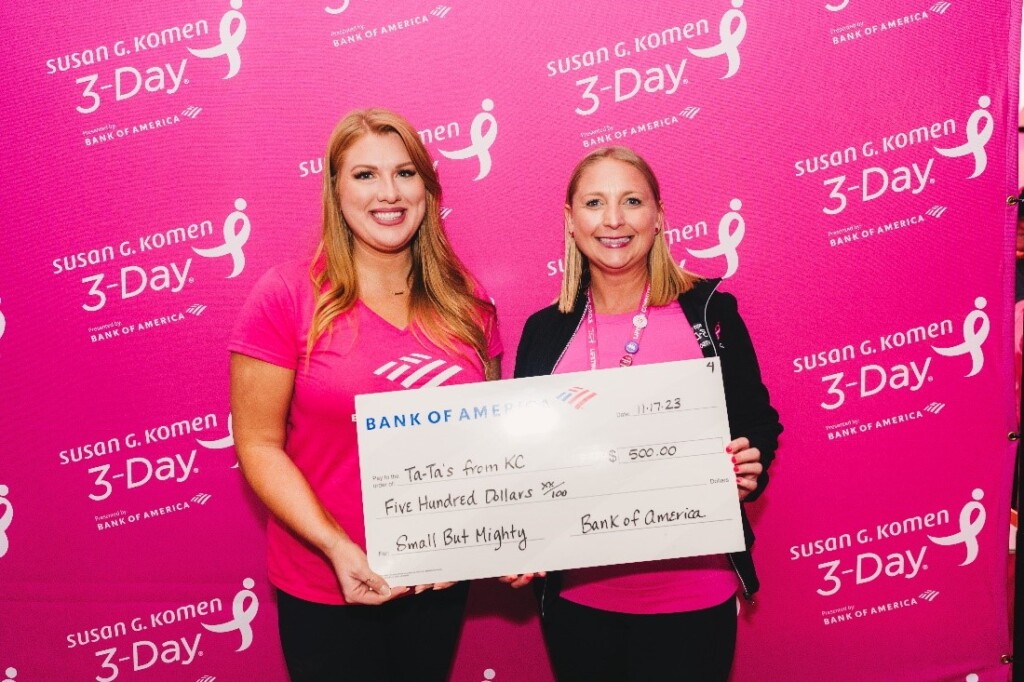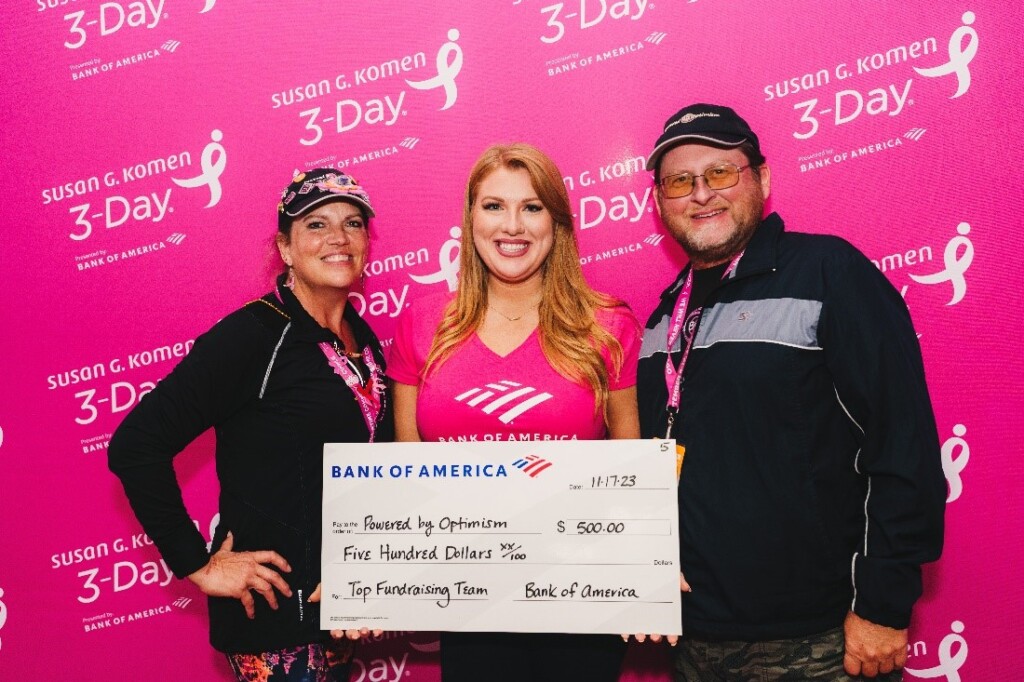Fundraising is a vital part of the Susan G. Komen 3-Day® that sometimes involves a whirlwind of emotions. It can be daunting to set goals, determine how to start, what methods to use, or even who to ask. To help you out, we’ve teamed up with some of our Top Fundraisers from 2023 to share all the wisdom that’s boosted them straight to the top of the leaderboards. From simple emails to elaborate golf outings, these trailblazers share the methods that have propelled them to the summit of fundraising excellence. They’ll spill the beans on what works best for them and reveal their tips and tricks to help you achieve your fundraising goals this year.
Laura P.: Top Fundraiser ? New England: $50,000+
For the past three years, Laura has been walking the Komen 3-Day in honor of her mom and best friend who have both battled breast cancer. Determined to prevent herself and her nieces from having to combat this tremendous disease, she takes fundraising very seriously. She raises most of her money through word of mouth, Facebook, and email, including updating the signature on her work email to include the link to her fundraising page. Laura acknowledges that fundraising can seem formidable, but notes that, from her experience, many people want to donate, especially when someone they know is doing something big like the 3-Day®.
“Tell everyone what you are doing, don’t be shy. When I send out the email, I include all the people who previously donated, all my friends, some co-workers, and I have included my parents’ friends too. I have been amazed at how many people have been touched by breast cancer or support me due to my mother.” Laura also emphasizes the value of reminder emails and asking people about their company’s matching gift policy. Her brother’s company does a double match one day a year, so he always donates on that day, and a friend of hers works at a company that always does a double match. “It is amazing when you can turn a $50 donation into $150 or $100 into $300.”
She also emphasizes the importance of sending out thank you notes to everyone who donated. After the walk, she sends a card with pictures from the walk as a wonderful way of including her donors in the Pink Bubble. Laura looks forward to walking again in the 2024 Denver 3-Day as a 1-Day walker. “Breast cancer has had such a negative impact on my life, but Susan G. Komen® has had such a positive impact. I feel as if I can make a difference, because of Komen.”
Cynthia S.: Top Fundraiser – Chicago: $36,000+
As a breast cancer survivor and first-time walker, Cynthia kicked off her 3-Day journey with a goal of raising $10,000 to help find the cures for breast cancer. However, her fundraising efforts took her to unexpected levels as she and her two daughters collectively raised $43,000. Her approach included sending letters, emails and text messages to friends, family, and business acquaintances. She happily shared her story and explained the 3-Day to anyone who asked for more information on the cause. Upon receiving donations, Cynthia sent out a handwritten thank you letter to each donor to let them know how much she appreciated their support in continuing the fight to end breast cancer. Whenever she hit a milestone or was close to achieving a goal, Cynthia’s husband encouraged her to push further and reach out to more acquaintances who she had not initially contacted. In fact, Cynthia and her husband increased her goal 4 or 5 times before settling at $36,000.
Prior to this effort, Cynthia had never fundraised for any organization. In fact, at the start she was shy about asking friends and family for donations. “I found that sending emails and text messages after I verbally let people know I was walking 60 miles over three days to raise money for [the cures] kind of opened the door for them to give. It was an amazing and uplifting experience to receive daily notifications from the 3-Day that a donation had been made and that alone made me want to reach out to even more potential donors! The realization that people were so happy to help made me even more excited about reaching my goals and beyond. Trust me, if I can do this anyone can! Taking the first step to commit is all it takes. From there the adrenaline will propel you to your fundraising goals, as well as to the finish line!”
Stephanie C.: Top Fundraiser San Diego – $64,000+
Stephanie first participated in the 3-Day in 2006 in Philadelphia with the attitude “Try something once. If you don’t like it, you never have to do it again.” Fifteen events later, she continues to show up to the 3-Day and raise funds as people she is close to continue to go through cancer treatment. “This disease touches so many people and many are silent about it. Being open about raising money for the cause and committing to the walk are ways you can help others talk about and participate in helping others in the journey to recovery,” she shared.
Year after year, Stephanie puts on a golf outing to raise money for the 3-Day, and each year it grows. She has many repeat supporters whom she sets out to make feel important before, during and after the event. She describes her donors as the backbone of the 3-Day, the true heroes who make it all possible. Her advice to first-time walkers is to start fundraising as soon as possible. Don’t be afraid to ask for donations. “It’s not about the big donations,” she shared, “it is about all the small ones. Use your networks ? tap into your friends to tap into their friends.” She also recommends creating a revenue stream that gives something back to the donor, like her annual golf outing.
She looks forward to walking again in the 2024 Dallas/Fort Worth 3-Day with her friends, including a survivor she met in 2021, and her sister who has joined her in walking the past few years. She sets out to match or exceed the amount she raised in 2023. In closing, she advises “It takes a village! Whether you are a top fundraiser or working hard to hit your minimum requirement ? it takes all of us to provide Komen the opportunity to put our money to good work.”

